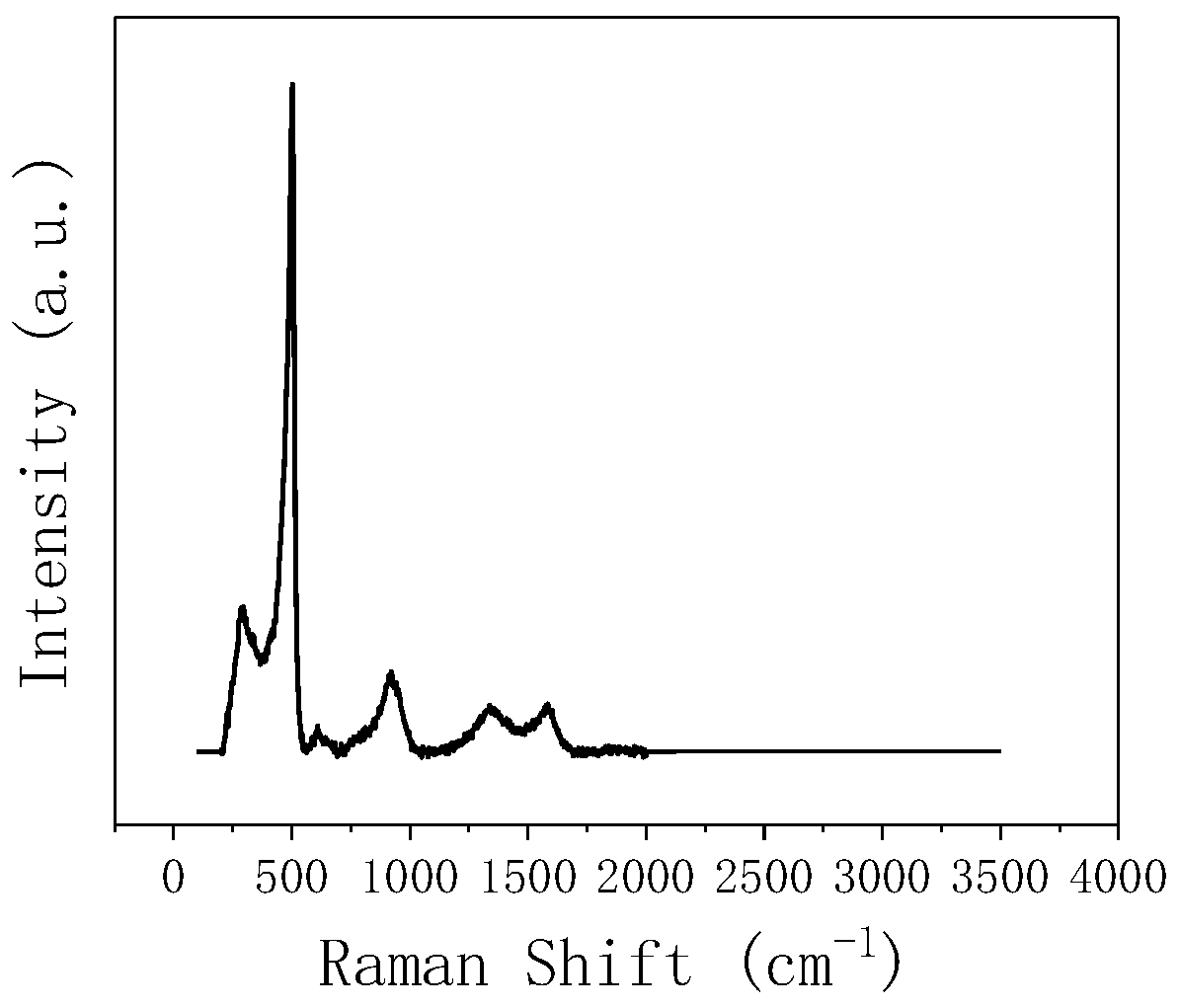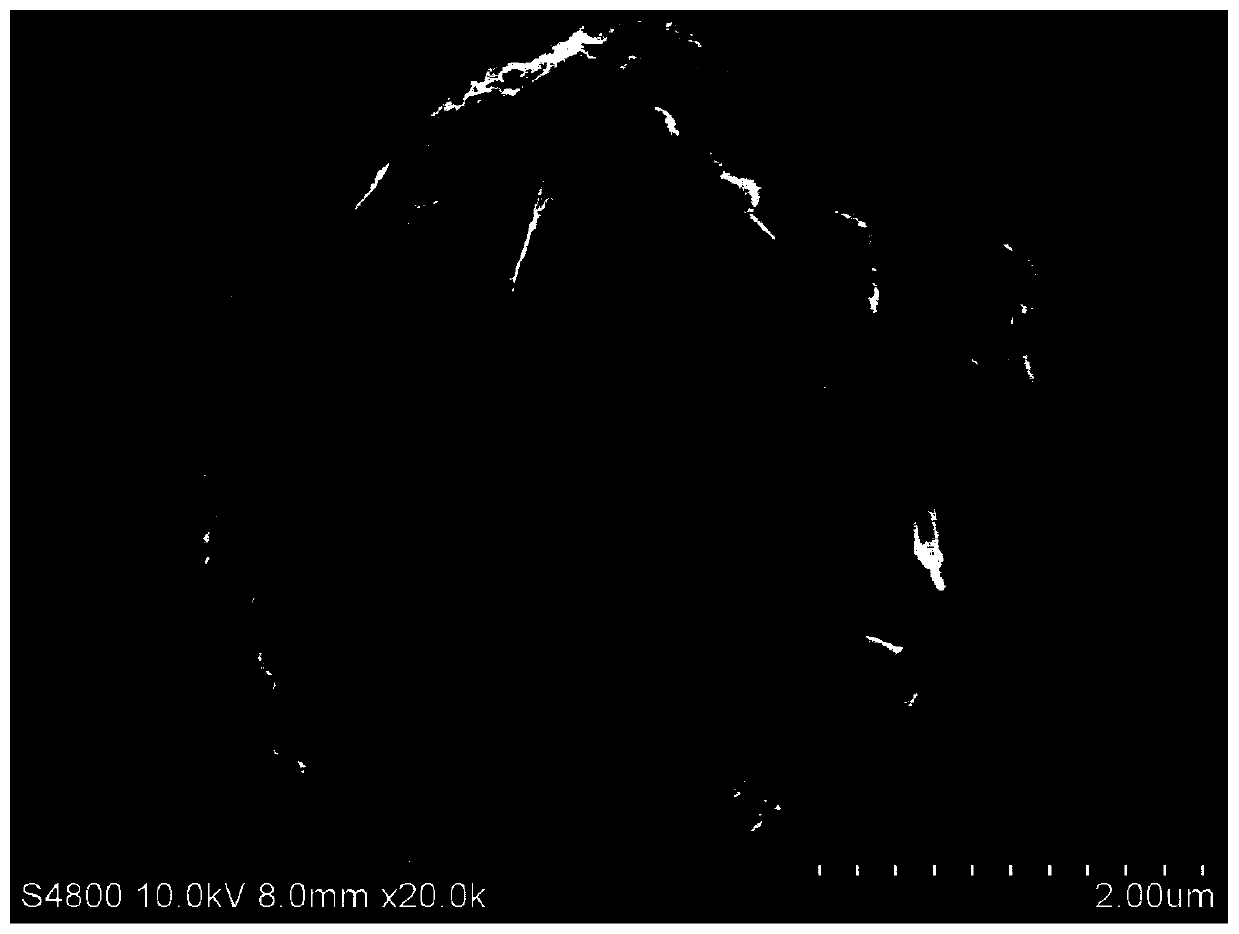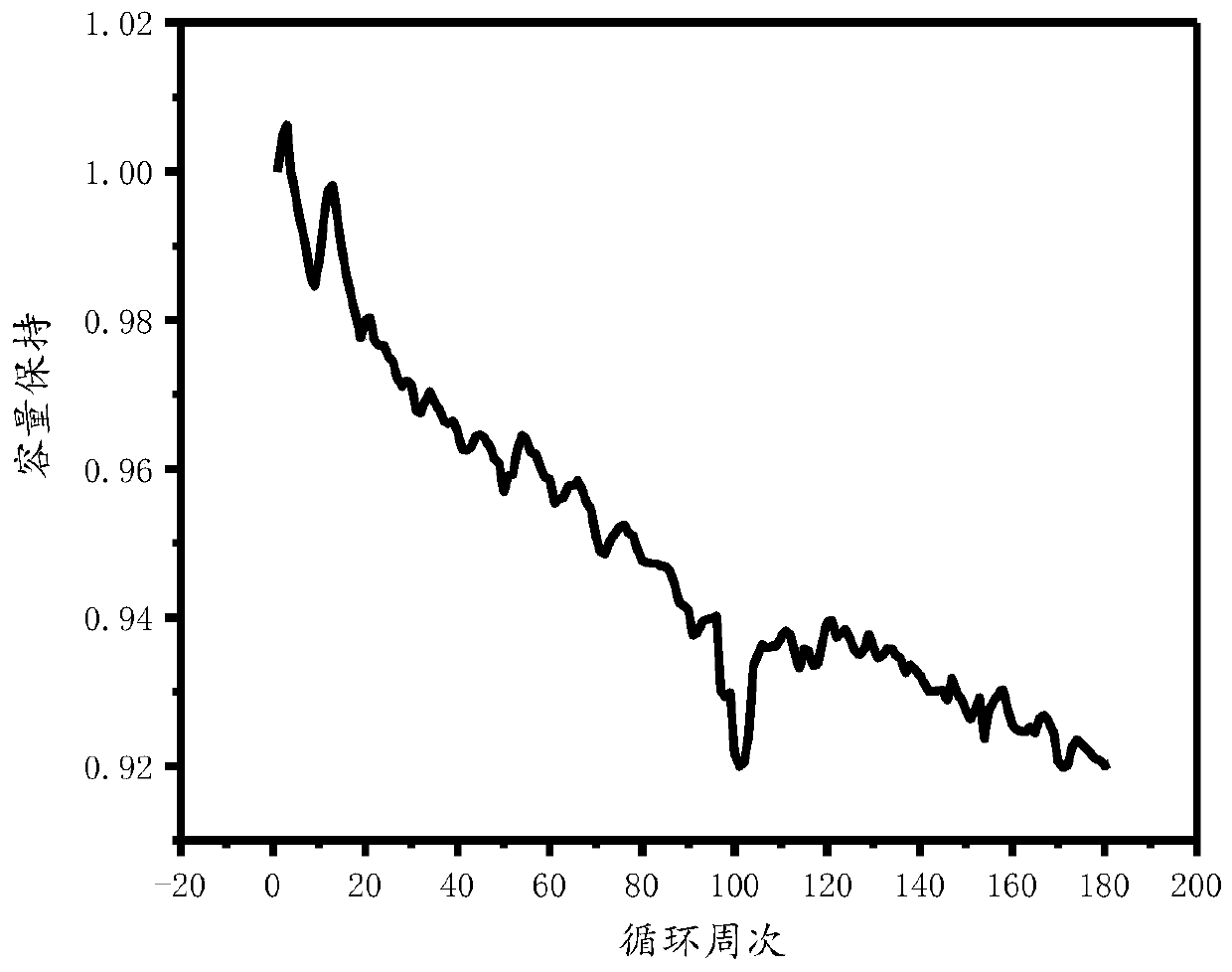Lithium battery anode material with core-shell structure and lithium battery
A technology of negative electrode material and core-shell structure, which is applied in the field of negative electrode material for lithium battery and lithium battery, can solve the problems of low coulombic efficiency in the first week, etc. The effect of stability
- Summary
- Abstract
- Description
- Claims
- Application Information
AI Technical Summary
Problems solved by technology
Method used
Image
Examples
Embodiment 1
[0045] This example provides a method for preparing a silicon-carbon composite material with a core-shell structure, including:
[0046] Step 1: Take 100 mL of a mixed solvent of ethanol and water (volume ratio 1:2), and add 30 g of sucrose to form a sucrose solution. Take 10 g of silylene oxide sample and 1 g of carbon black (average particle size of 50 nm), add them to the sucrose solution, and stir to form a uniform slurry.
[0047] Step 2: Dry the above slurry at 120°C for 8 hours to completely remove the solvent. Put the obtained product in a tube furnace at 600℃, high purity N 2 Pyrolyze for 8 hours, grind after cooling, and sieve (400 mesh).
[0048] The third step: Put the sieved sample into a tube furnace filled with argon and raise the temperature to 900°C, then switch the argon gas to a mixed gas of argon and acetylene (volume ratio 4:1), at 900°C After heating for 10 hours, the composite material with the core-shell structure of the present invention is prepared.
[0049...
Embodiment 2
[0054] This example provides a method for preparing a silicon-carbon composite material with a core-shell structure, including:
[0055] The first step: Take 10g of silylene oxide sample and mix with 5g pitch, and ball mill for 8 hours.
[0056] Step 2: Put the ball milled product in a tube furnace at 500℃, high purity N 2 Pyrolyze for 2 hours, grind after cooling, and sieve (400 mesh).
[0057] The third step: Put the sieved sample into a tube furnace filled with argon to heat up to 900℃, then switch the argon gas to a mixture of argon and acetylene (volume ratio 3:1), at 900℃ After heating for 8 hours, the composite material with core-shell structure of the present invention is prepared. The data is recorded in Table 1.
Embodiment 3
[0059] This example provides a method for preparing a silicon-carbon composite material with a core-shell structure, including:
[0060] The first step: Take 10g of silylene oxide sample and mix with 5g glucose, and ball mill for 2 hours.
[0061] Step 2: Put the ball milled mixture in a tube furnace at 600℃, high purity N 2 Pyrolyze for 5 hours, grind after cooling, and sieve (400 mesh).
[0062] The third step: Put the sieved sample into a tube furnace filled with argon and raise the temperature to 900°C, then switch the argon gas to a mixed gas of argon and acetylene (volume ratio 4:1), at 900°C After heating for 8 hours, the composite material with core-shell structure of the present invention is prepared. The data is recorded in Table 1.
PUM
| Property | Measurement | Unit |
|---|---|---|
| thickness | aaaaa | aaaaa |
| particle diameter | aaaaa | aaaaa |
| particle diameter | aaaaa | aaaaa |
Abstract
Description
Claims
Application Information
 Login to View More
Login to View More - R&D Engineer
- R&D Manager
- IP Professional
- Industry Leading Data Capabilities
- Powerful AI technology
- Patent DNA Extraction
Browse by: Latest US Patents, China's latest patents, Technical Efficacy Thesaurus, Application Domain, Technology Topic, Popular Technical Reports.
© 2024 PatSnap. All rights reserved.Legal|Privacy policy|Modern Slavery Act Transparency Statement|Sitemap|About US| Contact US: help@patsnap.com










